The SAP-ingress policy shown below is applied properly to a Nokia 7750 SR. A traffic stream is received from an IP address of 192.168.2.200 with DSCP and dot1p set to EF and 4, respectively. Which forwarding class and priority level is used for this traffic stream?
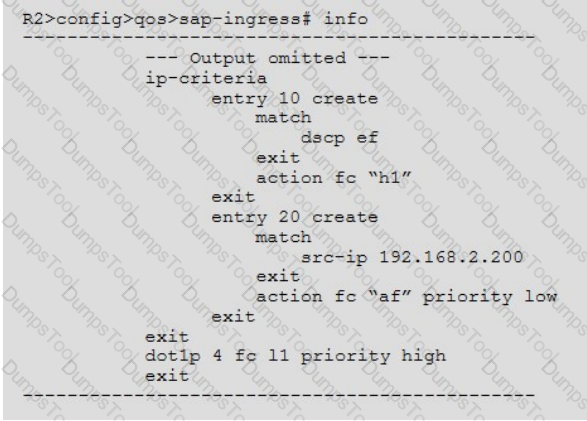
Assume all transmitted frames on a SONET port are 1500 bytes and that the average frame overhead has been configured as 10%. If the total bandwidth of all queues, excluding overhead, needs to be guaranteed at 55 Mbps, how much bandwidth should be configured for the egress port scheduler applied on that port?
If a packet is marked on a SAP-ingress, it will be remarked at the first network egress point (if remarking is enabled in the network egress policy).
Which of the following are categories of forwarding classes on the Nokia 7750 SR? (Choose two)
A profile-mode queue is configured with the following attributes: MBS = 10 KB, CBS = 5 KB and High-Priority- Only = 30%. Assume there is no CBS overbooking, and the slope-policy is disabled. If the current queue depth is 8 KB, what will happen to an in-profile packet?
Click the exhibit button below. Given the output of the #show pools 1/2/2 network-egress command on a GigE port, what can the service provider deduce? (Choose two)
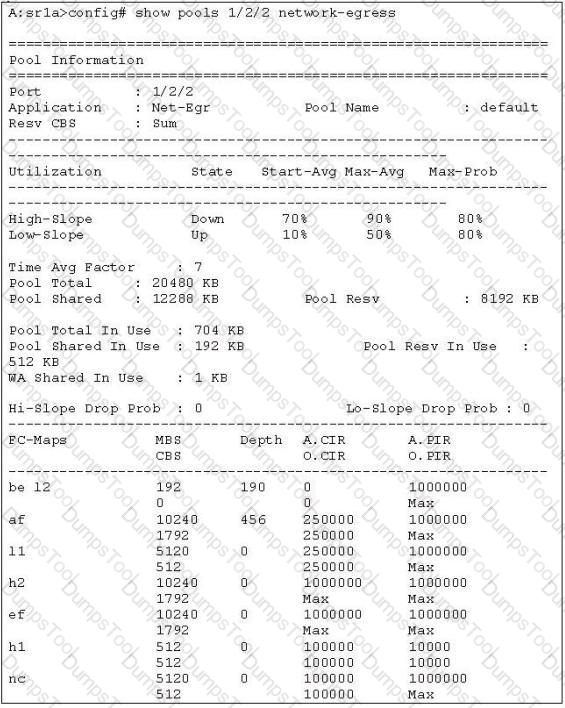
Which of the following is a forwarding class type that is intended for network control traffic on a Nokia 7750 SR?
Click the exhibit button below. Given this scheduler-policy configuration, which of the following can be said about the scheduler called "high"? (Choose two)
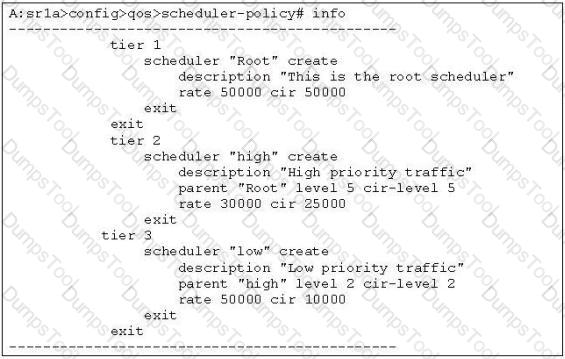
Why are the four QoS steps (classification, queuing, scheduling, and marking/remarking) executed twice for every packet entering a 7750 SR router?
Which of the following are NOT ingress matching criteria for a network policy? (Choose two)
Which of the following statements about the consequences of congestion is TRUE?
Which of the following statements about buffer admission control techniques is FALSE?
For which of the following queues does a Nokia 7750 SR allocate a separate hardware queue per each destination fast forward path complex (FFPC)?
Which of the following statements are TRUE regarding the building of a QoS-enabled network? (Choose two)
On the Nokia 7750 SR, what is the maximum number of queues that a single SAP-ingress policy can support in a VPLS?
Which of the following are major components of QoS functionality on the Nokia 7750 SR? (Choose three)
What can be learned from the output of the command “show pools 1/2/2 network-egress” on the GigE port?
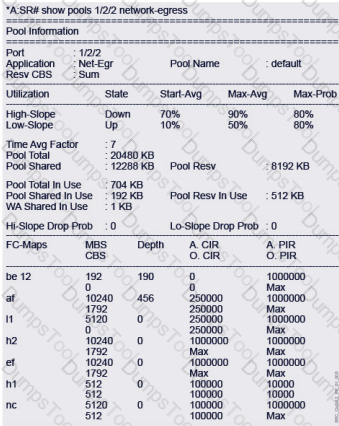
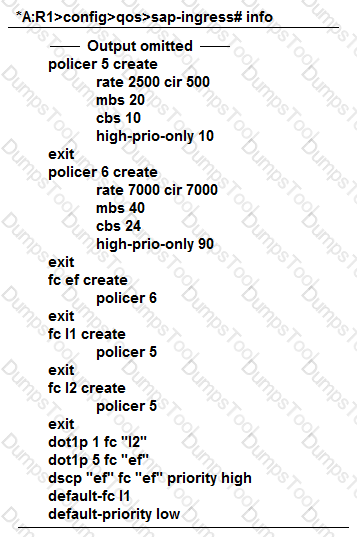
According to the SAP-ingress QoS policy shown, which of the following statements about packets processed by policer 6 is TRUE?
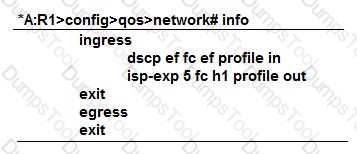
In the image shown above, the network QoS policy is applied properly to a Nokia 7750 SR. An MPLS packet with dot1p=1, EXP=4, and DSCP=AF is received. Which forwarding class and profile is assigned to this packet?
Which of the following statements describe the primary objectives of the policing of traffic flows on the Nokia 7750 SR? (Choose two)
Which of the following statements regarding buffer pool allocation are FALSE? (Choose two)
Click the exhibit button below.
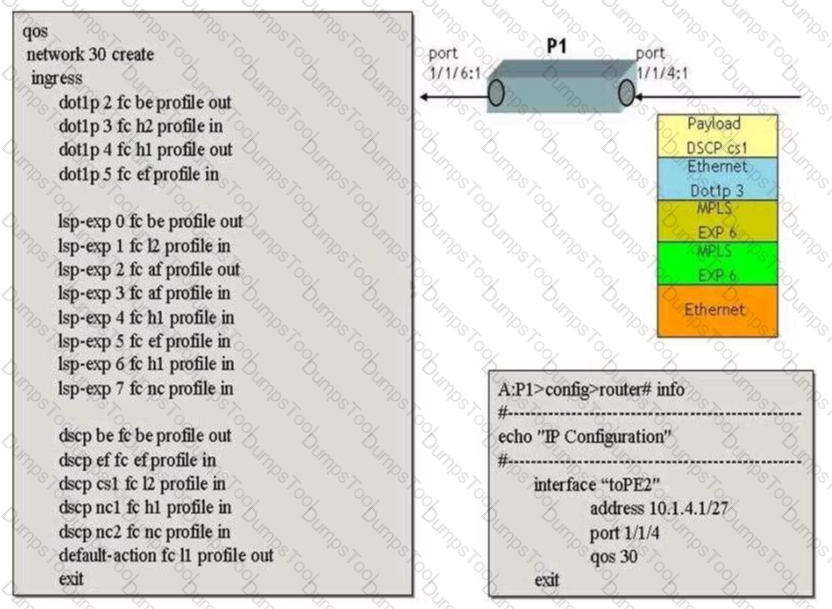
Based on the configuration of the network policy (below), what will be the forwarding class associated with a MPLS encapsulated customer packet that arrives on a dotlQ encapsulated network port 1/1/4:1 on P1 with the following characteristics:
EXP value = 6
DSCP value = cs1
Dot1pvalue = 3
If packets egressing a SAP do not match any criteria defined in the SAP-egress policy, which forwarding class will these packets be assigned to?
A queue-group template can contain both queues and policers when applied under which conditions?